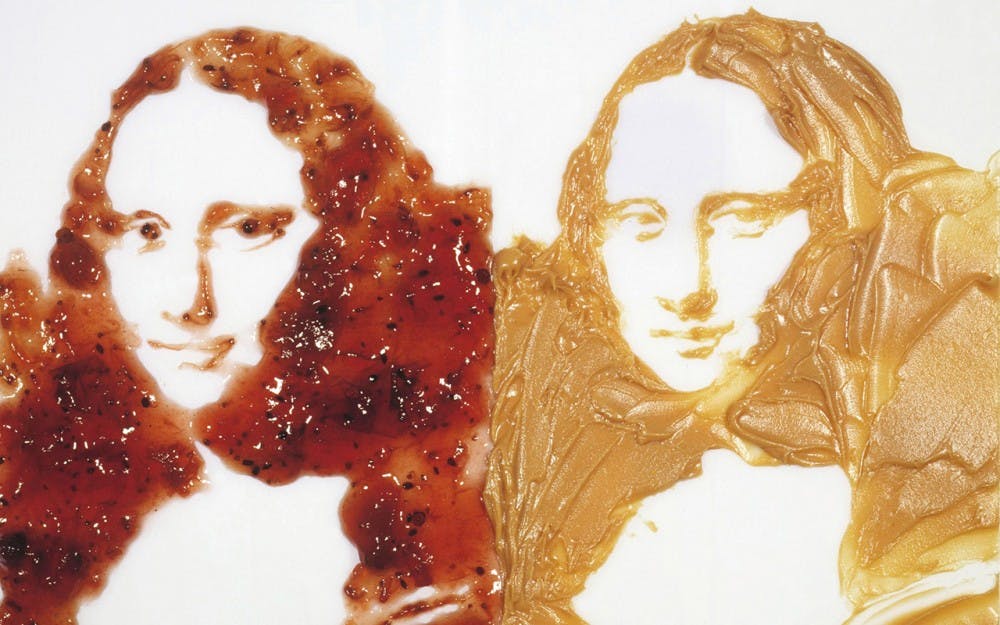The Eskenazi Museum of Art’s Noon Talks offer presenters interested in delving into the work of a particular artist an opportunity to share their observations with an audience. The latest in the series dealt with the special exhibition “Vik Muniz,” a mid-career retrospective of the artist’s work.
“Images We All Remember” presented the perspective of John Lucaites, associate dean of arts and humanities and undergraduate education, to a group of 21 students and community members Wednesday.
At the beginning of the talk, he stood to the right of a collection of Muniz’s recreated photographs of sketches based on famous Life magazine images, called “The Best of Life.” Lucaites said he considers himself an advanced amateur photographer. His scholarly background in rhetoric, which he has taught at IU for 30 years, is what frames his understanding of the world, he said.
“Rhetoric typically focuses its attention on words, written or spoken, and the ways in which words and narratives and arguments effect audiences in one way or another,” Lucaites said.
Nan Brewer, curator of works on paper, said Lucaites’ work revolves heavily on analysis of photographs through his rhetorical training. Brewer said Lucaites has published a variety of works on the topic of image culture in liberal democratic societies.
“He is the co-author of ‘No Caption Needed: Iconic Photographs, Public Culture and Liberal Democracy’,” Brewer said. “When I saw the amount of material in this exhibition and particularly the images from Life, I immediately thought of John for today’s Noon Talk.”
Lucaites said Muniz comes from a distinct perspective from other photographers because of his ties to the world of art, which lend him a perspective that differs from his contemporaries in the field because of the inclusion of his thoughts.
“His work is different from the kind of work that I would do on the face of it, because what I want to suggest is that his work has more to do with the indexical reality of the image, and, in fact, it underscores the meaning that spectatorship plays in the meaning of a photographic image,” Lucaites said.
Lucaites went on to describe Muniz’s work as a sort of “metapicture,” or a picture about pictures, created with the purpose to school the viewer about how to look at and interpret images they encounter.
Later in the talk, Lucaites described the connection between photographs and memory, which he tied into the narrative of how Muniz himself used his memory and the memory of others to sketch out the photos in his “The Best of Life” series.
“Taken collectively, ‘The Best of Life’ is something of an analog for the family album for America,” Lucaites said. “If the albums in our house mark our personal families, Life, in a sense, has done this for the nation itself.”
Lucaites told the story of how Muniz arrived in the United States and purchased the anthology of Life magazine photos and, once he lost it, felt the need to recreate the iconic images he found via sketch, including the moon landing, the Tiananmen Square protest photo and more.
Once Muniz completed the sketches, he took slightly out-of-focus photographs of them to create the illusion of connection with the originals, Lucaites said. These became the photographs in his series.
“In conclusion, when I look at and think about Vik Muniz’s work, which I think is an incredible oeuvre, what I’m reminded of is that art can be about many things, but at its core it’s about inviting us to see the world differently,” Lucaites said.






